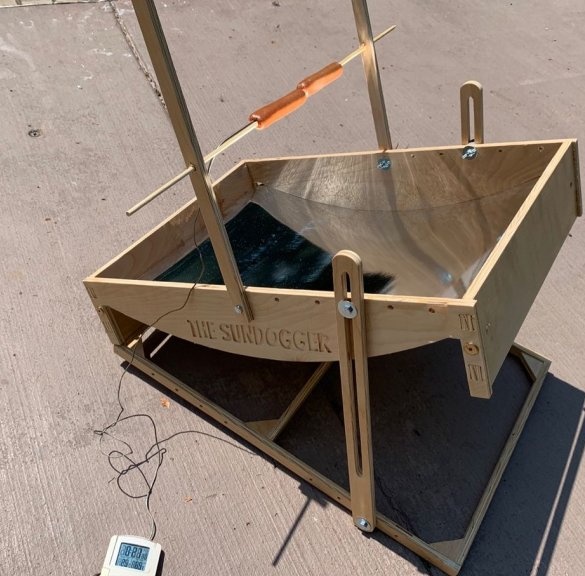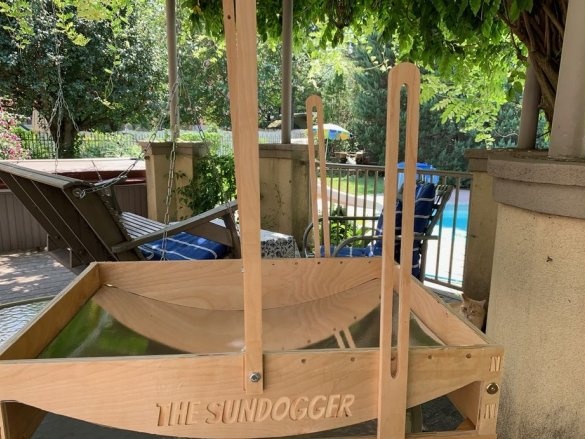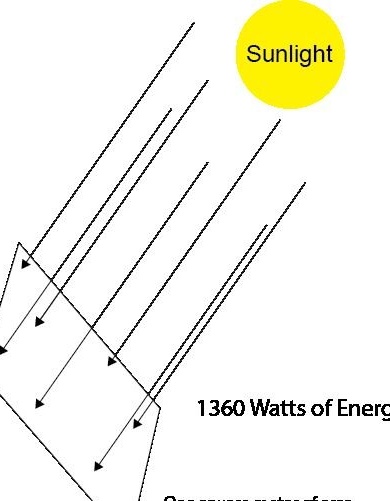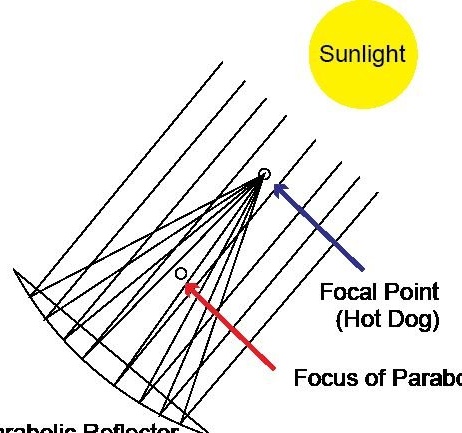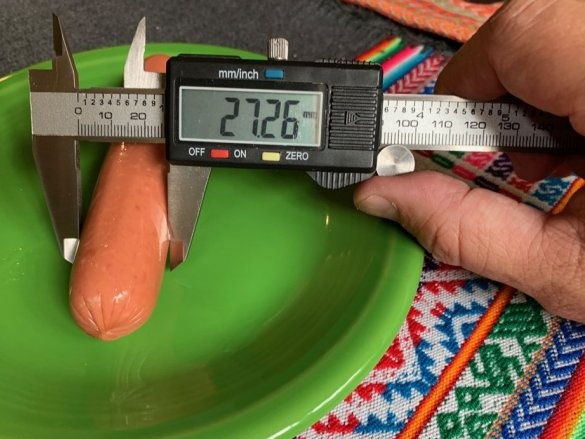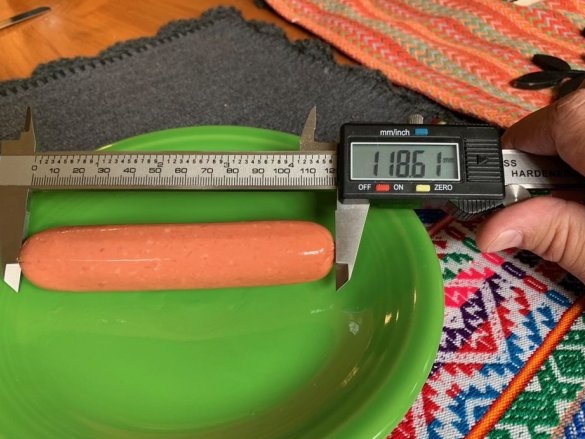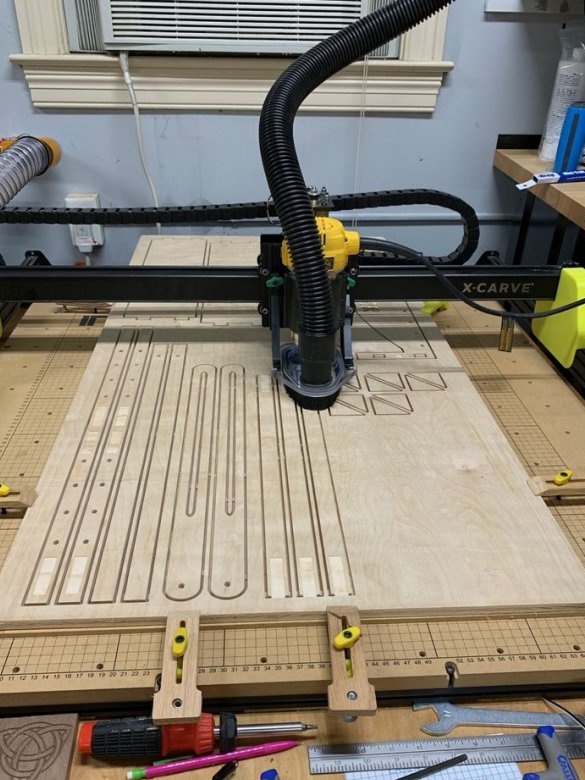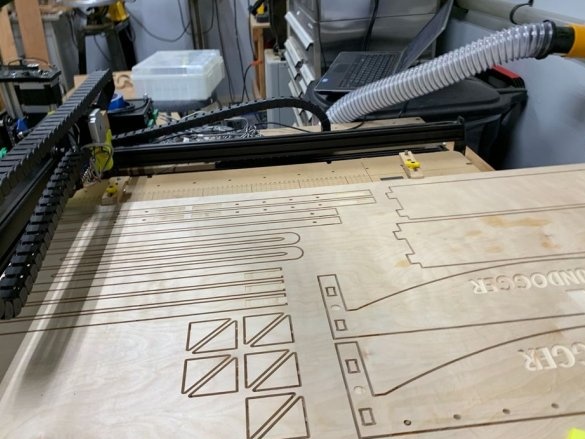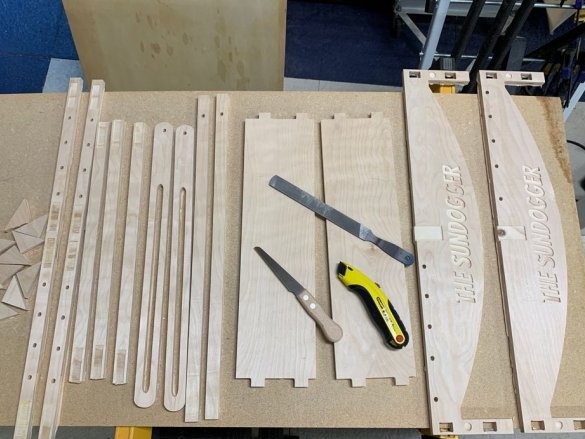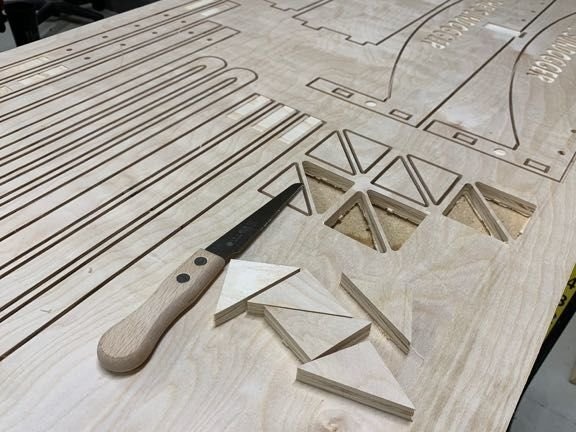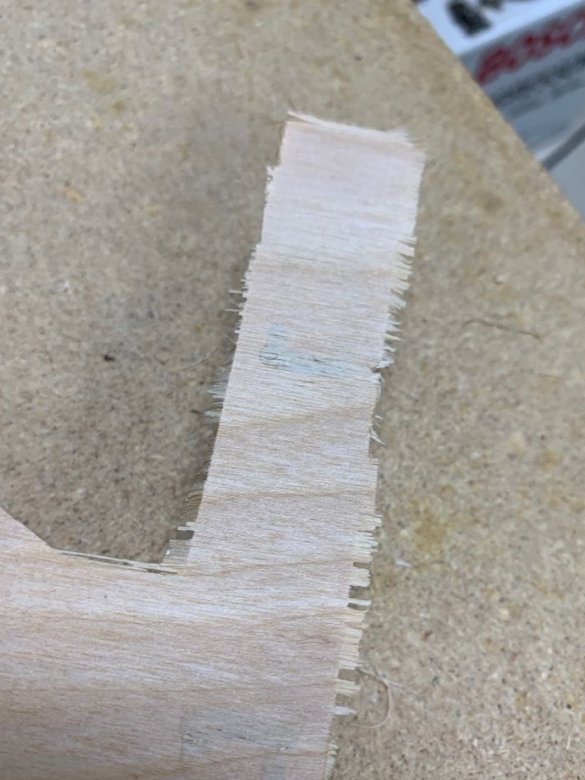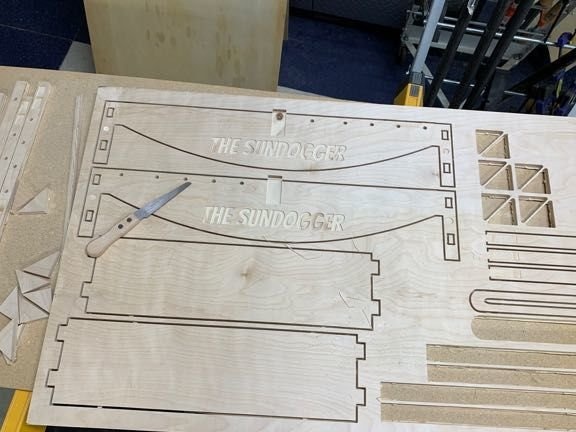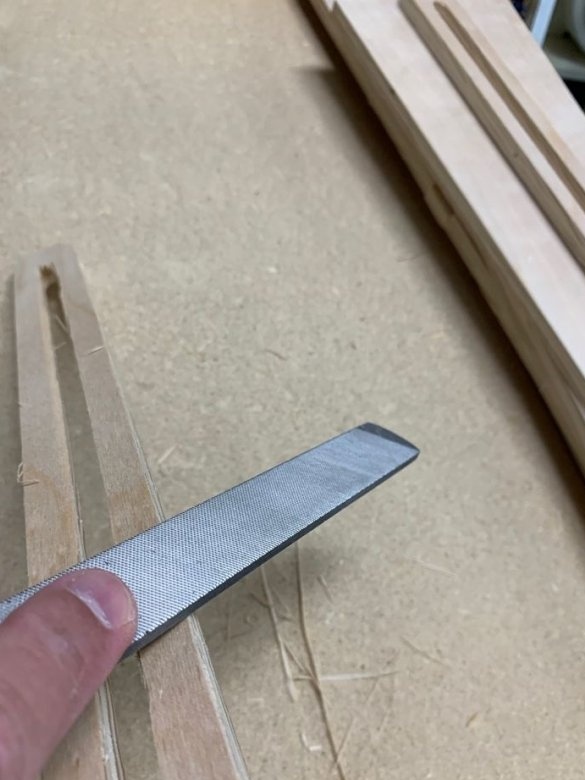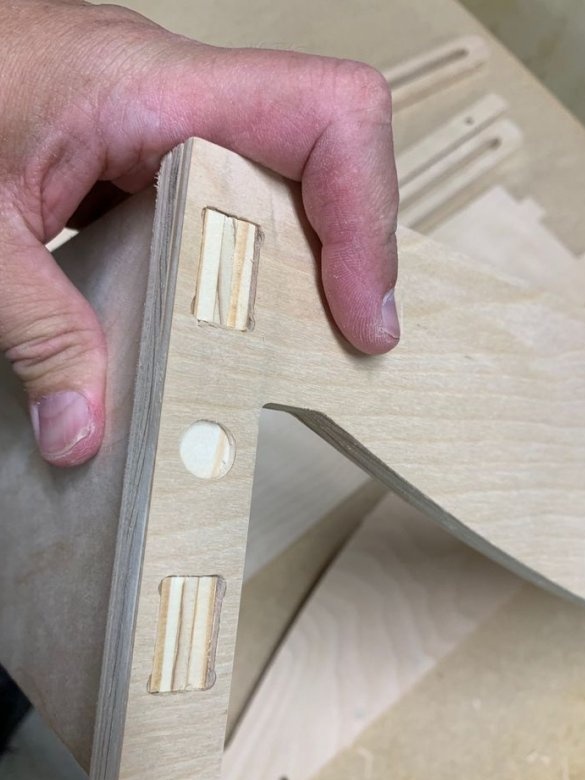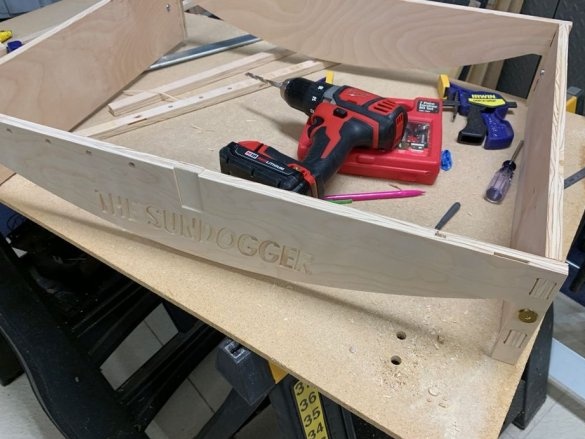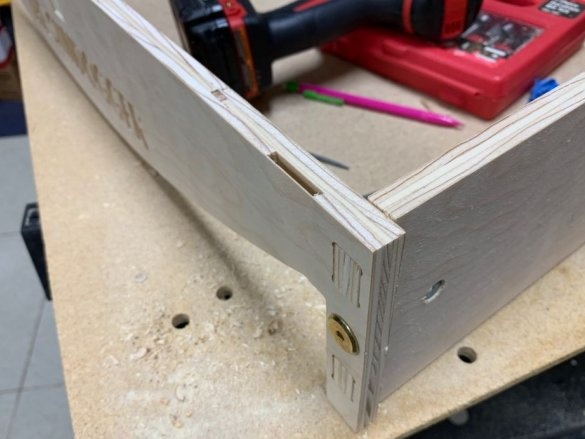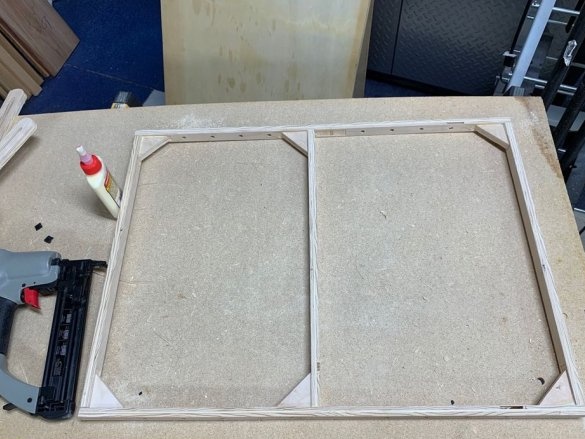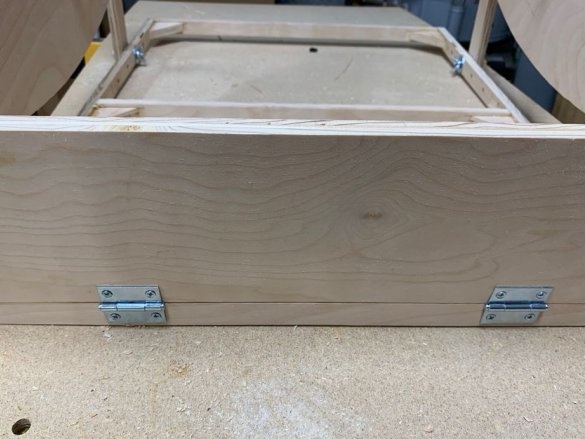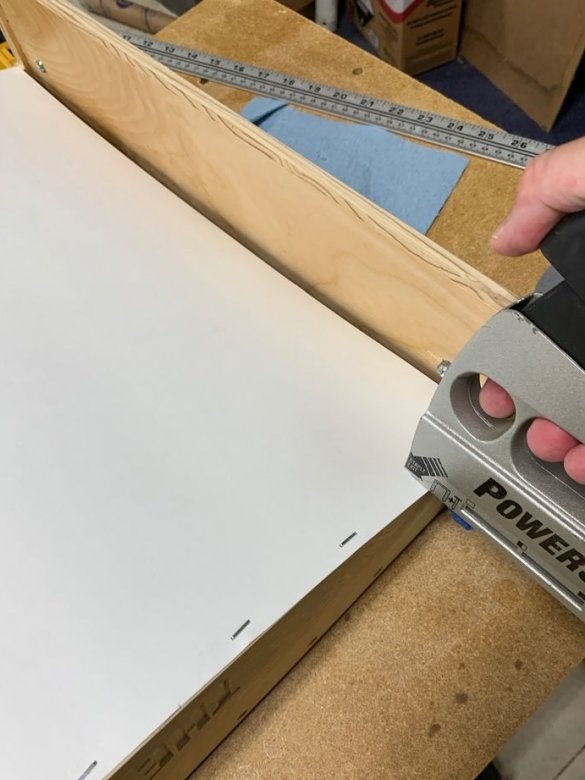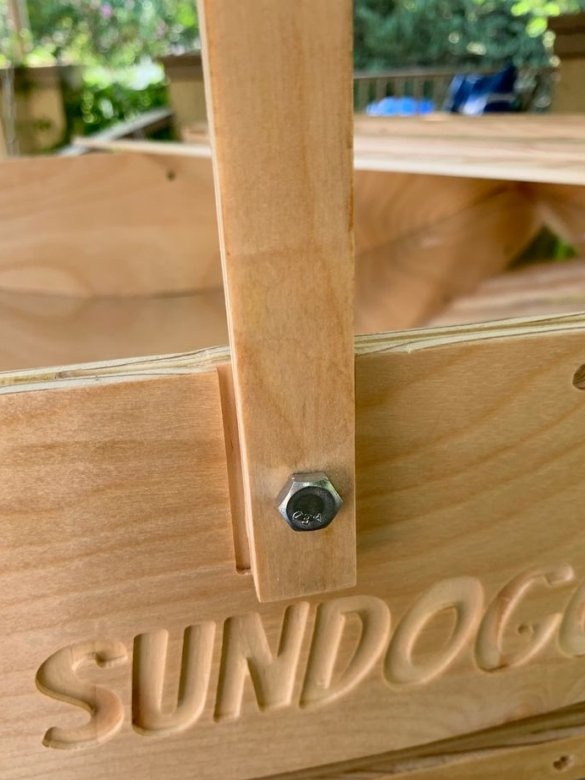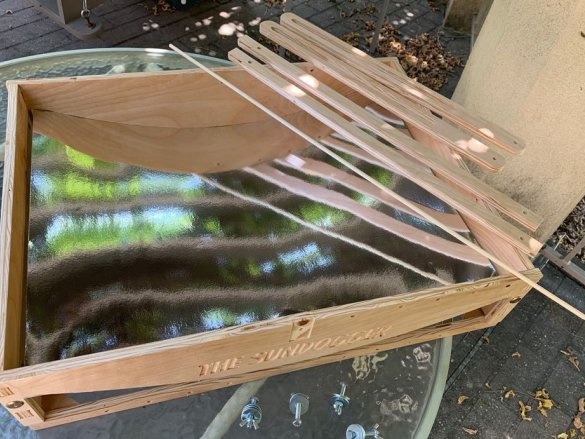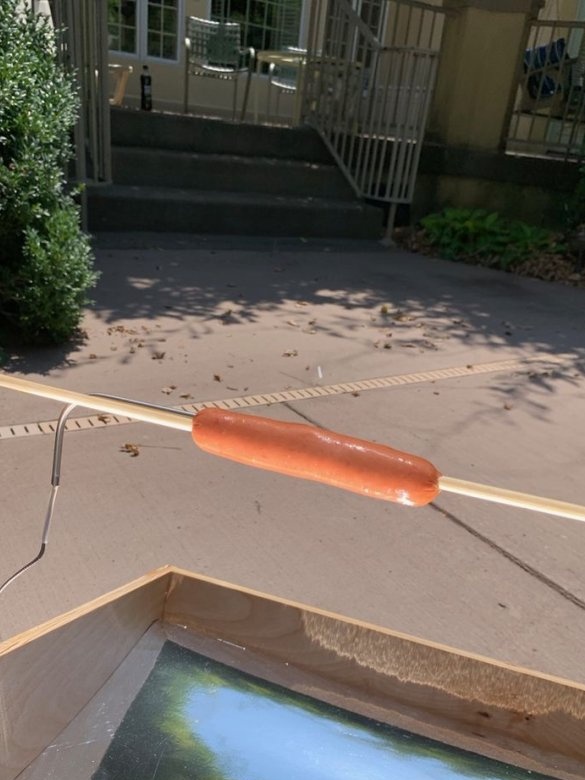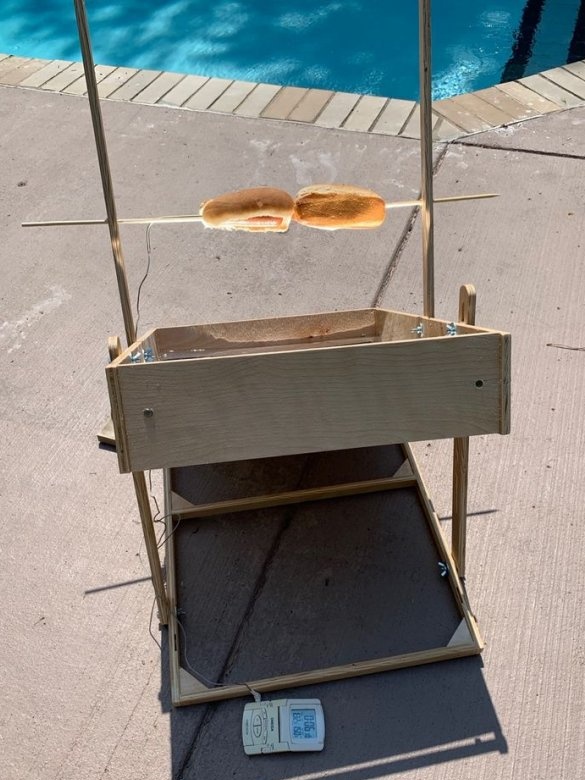The master decided to make this project in order to learn a little more about cutting large objects on his new CNC machine. However, he was also motivated by a constant interest in both solar energy and hot dogs. It is important to note that the oven will work with any kind of food that can be strung on skewers or made into a cylindrical shape. If you end up using other types of foods, make sure they are completely fried before eating them.
He initially tried to build this styrofoam stove. After some initial tests, the master found that it was hard to cut the polystyrene evenly. The foam plate crumbles too easily even when using the sharpest knife. There was a choice either to make a cutter for polystyrene foam or to use other material. As a result, the master settled on plywood.
An excellent reflector material, an aluminized sheet of paper, was purchased at a local store. Its reflectivity was high enough for the project to work. If you cannot find this material, aluminum foil mounted on cardboard is also suitable.
The total cost of the product was about $ 35, including plywood, reflective poster paper, etc.
Tools and materials:
-Plywood;
-Fasteners;
- Paper coated with aluminum;
- Loops;
-Wooden skewers;
- Joiner's glue;
-Finish for wood;
- CNC machine with a useful working area of at least 24 (609.6 mm) x 28 inches (711.2);
-Sandpaper;
-Knife;
-Saw;
-Drill;
-Clips;
Step One: Theory
On Earth, the total energy flux (flux density) from the Sun is called the solar constant. The solar constant is approximately 1360 watts per square meter, or 1.995 calories per square cm, when measured on a surface perpendicular to the incident sunlight. This number does not change, since the distance between the Earth and the Sun is approximately constant in the annual orbit.
The solar furnace, which the master builds, has a width of about 60 cm. The parabolic shape of the collector concentrates energy on the spit, so the energy for every centimeter of length will be energy that is concentrated on a local 1 cm of width in the collector. In this case, we get 1.991 calories per square cm per minute x 60 cm (width) = 117 calories per minute of solar energy per cm of length along the skewer.
Detailed scientific measurements -))) showed that a typical sausage has a diameter of about 2.5 cm. This gives a radius of the sausage of about 1.25 cm.The volume of a hot dog or something else is its length multiplied by the cross-sectional area. The cross-sectional area will be equal to A = Pi times the square of the radius. This means that each linear centimeter of sausage has a volume of (1.25 x 1.25 x 3.14) = 5 cubic centimeters.
The mass of any object is the density times the volume. According to the manufacturer of sausages, which the master used, each sausage weighed 57 grams. With a length of about 12 cm, this gives a volume of about 4.8 g per cm. It turns out the sausage density is slightly below 1 gram per cubic centimeter.
Combining these energy costs per centimeter and mass per centimeter, it turns out that 117 / 4.8 = 24 calories of energy per gram is added to the sausage every minute. Thus, every second we get enough energy to raise the temperature of the hot dog by about 24 degrees Celsius every minute when its internal temperature is around 20 ° C.
But this is true under ideal conditions without loss. Given the losses, the actual net efficiency of the stove is about 20%, the temperature increase of the hot dog and should be about 5 degrees Celsius per minute in bright sunlight. It takes about 15 minutes to heat a sausage to a temperature of 80 ° C from an initial temperature of 20 ° C.
Step Two: Cutting
The master designed the furnace layout using the Easel Inventable program. Then, plywood was cut on the CNC machine.
Files for cutting can be downloaded below.
hotdog.py
sundogger-edited.svg
sundogger.svg
design.svg
Step Three: Finalize Parts
After cutting, the parts must be disconnected and processed. The master cuts off the joints and polishes the problem areas with a file and sandpaper.
Step Four: Build
Now you can start assembling the solar furnace.
First, the master collects the frame. For fixing parts uses carpentry glue and furniture screws. After assembling the frame, the master covers several layers of shellac.
Now you need to fix the foil paper.
Racks and skewers are fixed.
Everything is ready, it remains to string a sausage on a skewer, set the oven and adjust the angle of inclination.

